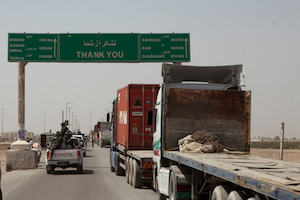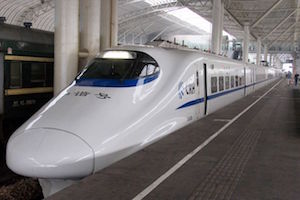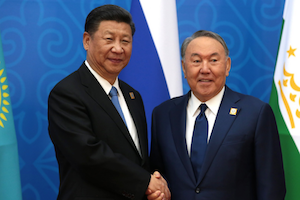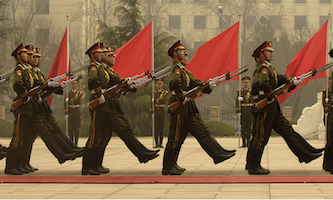Afghanistan-Iran Trade Corridors to Bear Fruit for Both India and China
By Tristan Kenderdine
July 17, 2018, the CACI Analyst
A strategic deployment of trade corridors is taking shape across Afghanistan and Iran as both India and China subvert each other’s trade strategies through key geoeconomic states. Afghanistan’s land corridor to Chabahar port connects it to India by sea, creating a Persian-Gulf to Caspian Sea corridor, while the Afghan air corridor to India provides a parallel, more direct trade route. By contrast, China’s twin economic corridors in the region run perpendicular: north-south through Pakistan to the Gulf, and east-west through Iran to Istanbul. Pakistan’s Gwadar and Iran’s Chabahar are thus effectively in the same geopolitical node, connecting very different Great Game trade strategies.

A Decade of China-Europe Trains
By John C. K. Daly
May 8, 2018, the CACI Analyst
Almost ten years ago, a historical moment in rail transport occurred when on October 6, 2008 a train arrived in Hamburg, Germany, 17 days after departing from Xiangtan in China’s Hunan province. While the service was at the time considered as too inconsistent and too slow to gain any real market appeal, China persisted with various train routes across Eurasia with regular service established in 2012. According to China Rail Corporation, 3,673 trains transited Eurasia in 2017, linking 35 Chinese cities with 34 European cities in 12 countries, a number set to rise to 4,000 in 2018. This commitment to free trade stands in rising contrast to the recent protectionist policies adopted by the U.S. Trump administration, divergences which seem likely to grow in the near future.

China's Belt and Road Initiative: Relieving Landlocked Central Asia
By Avinoam Idan
May 1, 2018, the CACI Analyst
One of the most significant factors impacting Central Asia is its landlocked geography. This situation affects almost every sphere of life—foreign policy, national security and economy. However, China’s BRI project may alter the impact of China on the region. China’s BRI can transform Central Asia from its landlocked state to a transit region between Asia and Europe. Essentially, China is unlocking landlocked Central Asia. Recently, there have been two significant developments: the increase in volume of freight passing through the “dry port” of Khorgos, (in Kazakhstan), and the acceleration of the implementation of the China-Pakistan corridor leading to the Indian Ocean. Each of these developments plays a part in the Chinese initiative and in its impact on Central Asia. The BRI is, thus, the trigger for the geopolitical earthquake in the region.

China's Policy Bank Investment Profits from Uzbekistan's Monetary Policy Reform
By Tristan Kenderdine
April 16, 2018, the CACI Analyst
Following high-profile visits by Premier Li Keqiang in 2015 and Xi Jinping in 2016, China’s is domestically devolving its trade and industrial relationship with Uzbekistan to provincial and prefectural levels of government. However, financing for China’s investment in Uzbekistan remains either directly invested or indirectly coordinated by one of China’s three central policy banks, Export-Import Bank of China, China Development Bank, and the Agricultural Development Bank of China. Since 2014, the Exim Bank has committed to fund Belt and Road projects worth around US$ 120 billion, which corresponds to nearly a full year’s GDP for Uzbekistan. These quasi-sovereign wealth funds certainly pose a systemic debt risk, but are not necessarily a debt-trap.

A Chinese Base in Central Asia
By Stephen Blank
April 12, 2018, the CACI Analyst
During January and February, several reports surfaced of a new Chinese military base in Afghanistan’s Wakhan corridor. According to Afghan officials, China and Kabul discuss building a base in Badakhshan and China will send an expert delegation to Kabul to determine the exact site, and will fund the base and all of its material and technical expenses, including weapons and equipment. China has denied these reports as they contradict its long-standing position that it is not seeking foreign bases or intends to intervene militarily in Central Asia. However, witnesses have reported seeing Chinese and Afghan troops on joint patrols. Moreover, there is a long record of signs of a growing Chinese military interest in Central Asia.



